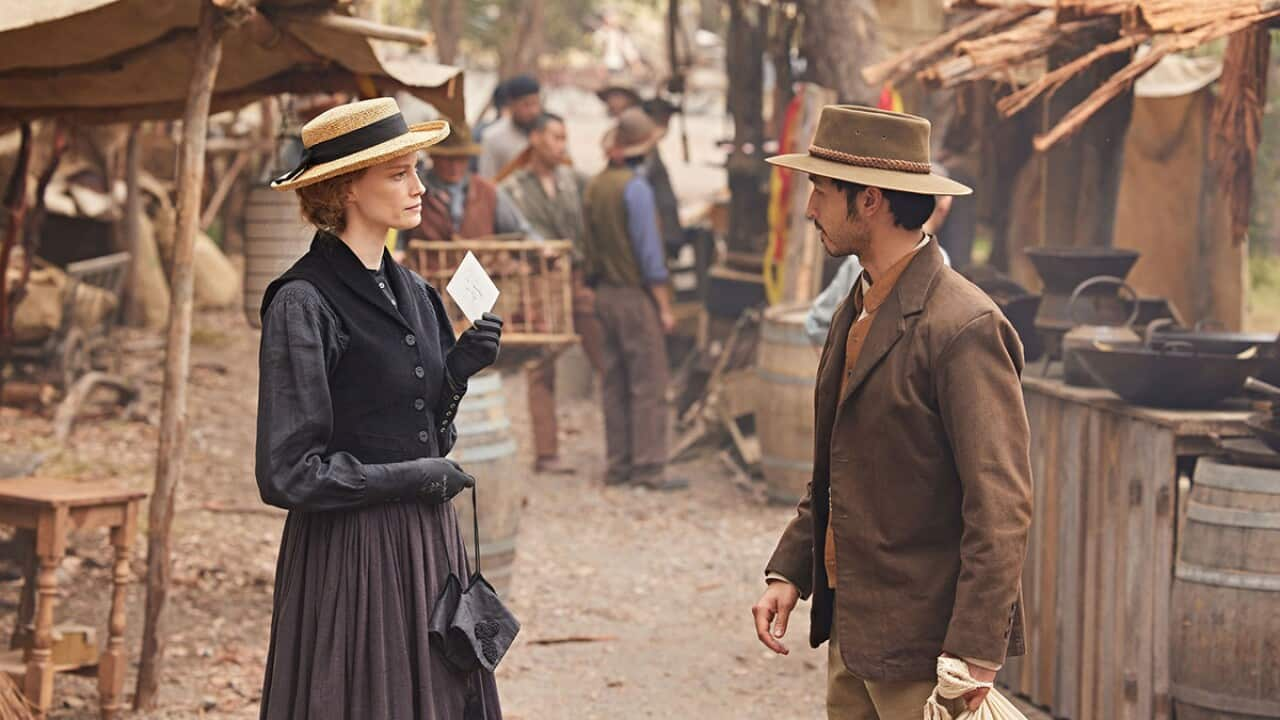For anyone with even the slightest interest in space science, Looking for Life on Mars is an engrossing watch. Documenting NASA’s efforts to send the robot probe Perseverance to Mars in 2020, the film shows how the difficulties of interplanetary exploration are compounded by the Covid-19 pandemic, as the boffins of the Jet Propulsion Laboratory labour under reduced staffing and anti-Covid hygiene practices to make their exceedingly small launch window (Mars’ orbit means we can generally only fling spaceships at it once every two years).
But they keep trying, as we always have – the dream of going to Mars is an old one, as is the anxiety (unfounded… probably) that some little green men will perhaps come here from there.
Our closest celestial neighbour bar the Moon, Mars is visible to the naked eye and notable for its red coloration (from iron oxide dust in the thin Martian atmosphere). Humans have always gazed on Mars with intense interest, but “Mars fever” hit hard in the late 19th century when Italian astronomer Giovanni Schiaparelli observed what he conjectured might be channels on the planet’s surface. Thanks to a mistranslation the Italian “canali” became “canals” in the English-speaking press, cementing the idea that some intelligent and reasonably sophisticated society called Mars home. And so, for almost 150 years, we’ve been looking for life on Mars.
Into the wild red yonder

CGI of Mars helicopter flying on Mars; ‘Looking for Life on Mars’ Source: NASA
Science fiction wasn’t particularly “hard” back in the day, with interplanetary explorers making the journey by cannon, balloon, magic carpet and any variety of craft, often powered by some imaginary fuel or antigravity force heretofore unknown to science. Sometimes the method of travel is handwaved entirely – in Edgar Rice Burroughs’ John Carter stories, the hero gets to Mars via a magic cave. Trips to Mars don’t really get “plausible” until the Golden Age of Science Fiction in the 1930s and ’40s, when writers like Robert Heinlein brought some scientific rigour to the subject while still leaving room for flights of fancy.
What’s interesting, however, is how what we find there reflects the cultural attitudes of the time. The planetary romances of Burroughs and company are steeped in colonialism and imperialism, with the Conan-like John Carter carving his way through hordes of barbarian Martians. Later writers flipped it: In The Martian Chronicles (1950) Ray Bradbury has human colonists accidentally wipe out most of the native civilisation with disease, proceeding to overwrite the indigenous Martian culture with their own Earthly customs and mores. Since we’ve learned that any native life there is either long gone or microbial, Mars is now frequently predicted as a breakaway colony throwing off the shackles of an authoritarian Earth – think Total Recall (1990), Babylon 5 (1993–98) and The Expanse (2015–) – a stand-in for anti-imperial revolution.
Since we’ve learned that any native life there is either long gone or microbial, Mars is now frequently predicted as a breakaway colony throwing off the shackles of an authoritarian Earth – think Total Recall (1990), Babylon 5 (1993–98) and The Expanse (2015–) – a stand-in for anti-imperial revolution.

CGI of Perseverance in space on its way to Mars; ‘Looking for Life on Mars’ Source: NASA
But the real-world explorations of NASA and the JPL are better reflected in movies like Ridley Scott’s The Martian (2015), based on the novel by Andy Weir, and the . The former actually gets name-checked in Looking for Life on Mars as a personal favourite of the Jet Propulsion Laboratory team, seeing as their department features heavily in the film. The latter, produced by Michael Glazer and Ron Howard, attempts a rigorously hard sci-fi account of a Martian colonisation effort in 2033, interspersing the fictional drama with interviews with current experts and commentators such as Weir, Susan Wise Bauer, Robert Zubrin and Neil deGrasse Tyson, lending the series a welcome sense of authenticity. While there’s plenty of peril in both, The Martian and Mars both paint a hopeful picture, with humanity’s best and brightest coming together to achieve the seemingly impossible.

Perseverance rover on the assembly line at the Jet Propulsion Laboratory; ‘Looking for Life on Mars’ Source: NASA
The chances of anything coming from Mars…
Stories in which Martians come to Earth tend to be not so optimistic. While we’ve had the occasional heroic (DC Comics’ The Martian Manhunter) or benign (the classic sitcom My Favorite Martian) visitor, the best we can hope for is generally bumbling (Marvin the Martian), or dead (the ancient aliens of Qatermass and the Pit, who are still a lot of trouble). When they come, they invade, and when we’re talking about invaders from Mars, we’re talking about War of the Worlds (or to be fair, Invaders from Mars, filmed in 1953 and remade in 1986).
Much like our trips to Mars reflect our attitudes to settlement and colonisation, when the Martians come for us they bring with them our fears of war and global conflict, and each version seems to roughly coincide with a big leap in military technology. Debuting in 1898, H.G. Wells’ original novel came along as the mechanisation of warfare was in full swing, and it’s not difficult to see the brutal, impersonal efficiency of the machine gun in his Martian war machines, which also prefigured the tank of World War I. Gas was not widely used in combat until the First World War either, but the theory was in place in the 19th century and echoed in the strangling “black smoke” the Martians deploy.
By the time of the 1953 film version, we were in full Cold War nuclear paranoia. Not only do the devastating Martian weapons of producer George Pal’s movie invoke the imagery of the bomb, but a sequence where atomic weapons prove ineffective against the invaders cuts to the deep fear that drives the arms race – the notion that their own devastating arsenal might not be enough. 25 years later, we get Jeff Wayne’s ambitious musical adaptation, and the focus on the anguished voices of the characters speaks to the trauma of returned soldiers from the recent Vietnam War. Steven Spielberg’s 2005 film, wherein human victims are simply vaporised by the Martian war machines, draws from the dust-choked aftermath of the 9/11 attacks.
Now, looking at the , it’d be drawing a long bow to suggest that series creator Howard Overman predicted the pandemic, but looking at the show, the parallels are striking: the invisible enemy, the slow response from authorities, the empty, lifeless streets. There’s a narrative focus on biology and medical science and, with recent revelations in season 2, a growing paranoia about who could be “the enemy”. It may not be an act of straight-up precognition, but it’s unarguable that the series has its finger on the pulse.
War of the Worlds is currently airing Wednesdays on SBS and SBS On Demand. Series 1 is also streaming . Looking for Life on Mars is streaming now at SBS On Demand:
More from The Guide

The hopeful apocalypse of ‘War of the Worlds’









